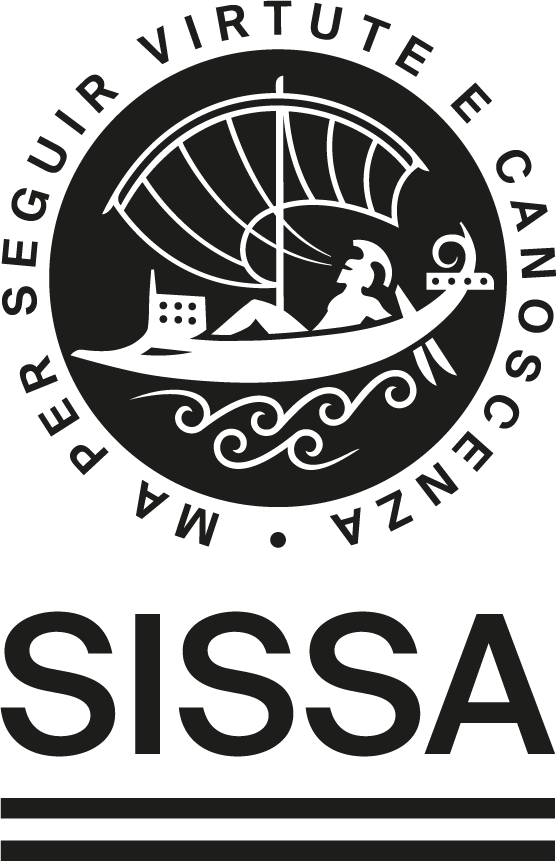12th Trieste–Ljubljana-Zagreb meeting @ ICTP
When: Monday, 13th May, 2024
Where: Adriatico Guesthouse, ICTP, Trieste.
All talks (20+10) in Kastler lecture Hall. Poster session next to Kastler lecture Hall – please hang on your poster during the lunch break
Program
| 10:00–10:20 |
Welcome / coffee break |
| 10:20–10:50 |
Lata Kharkwal Joshi (SISSA) |
| 10:50–11:20 |
Urban Duh (FMF) |
| 11:20–11:50 |
Luca Lumia (SISSA) |
| 11:50–14:00 |
Lunch break and discussion |
| 14:00–14:30 |
Rafał Świętek(JSI) |
| 14:30–15:00 |
Adam McRoberts(ICTP) |
| 15:00–16:30 |
Poster session / free discussion (coffee provided) |
| FMF |
= |
Faculty of Mathematics and Physics (Ljubljana) |
| JSI |
= |
Jožef Stefan Institute (Ljubljana) |
| SISSA |
= |
International School for Advanced Studies (Trieste) |
| ICTP |
= |
International Centre for Theoretical Physics (Trieste) |
Abstracts
| Measurements of many-body quantum chaos in quantum simulators |
| Speaker |
Lata Kharkwal Joshi (SISSA) |
| Abstract |
TBA
|
| Same-gate quantum circuits: classification, space-time symmetries and the level-spacing distribution |
| Speaker |
Urban Duh (FMF) |
| Abstract |
We study Floquet systems with translationally invariant nearest-neighbor 2-site gates. Depending on the order in which the gates are applied on an $N$-site system with periodic boundary conditions, there are factorially many different circuit configurations. We prove that there are only $N – 1$ spectrally different classes which can be viewed either as a generalization of the brick-wall or of the staircase configuration. Every class, characterized by two integers, has a nontrivial space-time symmetry with important implications for the level-spacing distribution — a standard indicator of quantum chaos. Namely, in order to study chaoticity one should not look at the eigenphases of the Floquet propagator itself, but rather at the spectrum of an appropriate root of the propagator. Talk based on 2401.09708 by me and Marko Žnidarič.
|
| Measurements induced transitions beyond gaussianity
|
| Speaker |
Luca Lumia (SISSA) |
| Abstract |
Repeated measurements can induce entanglement phase transitions in the dynamics of quantum trajectories. Interacting systems, both chaotic and integrable, generically show a stable volume-law entangled phase at low measurement rates which disappears for free, gaussian fermions. Interactions break the gaussianity of a dynamical map in its unitary part, but non-gaussianity can be introduced through measurements as well. By studying the non-gaussianity structure of quantum trajectories, we propose a single-particle indicator of the measurement-induced phase transition and we use it to show its stability when non-gaussianity is purely provided by measurements.
|
| Normal weak eigenstate thermalization |
| Speaker |
Rafał Świętek (JSI) |
| Abstract |
Eigenstate thermalization has been shown to occur for few-body observables in a wide range of nonintegrable interacting models. For intensive observables that are sums of local operators, because of their polynomially vanishing Hilbert-Schmidt norm, weak eigenstate thermalization occurs in quadratic and integrable interacting systems. Here, we unveil a novel weak eigenstate thermalization phenomenon that occurs in quadratic models whose single-particle sector exhibits quantum chaos (quantum-chaotic quadratic models) and in integrable interacting models. In such models, we show that there are few- body observables with a nonvanishing Hilbert-Schmidt norm that are guarrantied to exhibit a polynomially vanishing variance of the diagonal matrix elements, a phenomenon we dub normal weak eigenstate thermalization. For quantum-chaotic quadratic Hamiltonians, we prove that normal weak eigenstate thermalization is a consequence of single-particle eigenstate thermalization, i.e., it can be viewed as a manifestation of quantum chaos at the single-particle level. We report numerical evidence of normal weak eigenstate thermalization for quantum-chaotic quadratic models such as the 3D Anderson model in the delocalized regime and the power-law random banded matrix model, as well as for the integrable interacting spin-1/2 XYZ and XXZ models
|
|
Ballistic conductance with and without disorder in a boundary-driven XXZ spin chain
|
| Speaker |
Adam McRoberts (ICTP) |
| Abstract |
Motivated by recent experiments on Google’s sycamore NISQ platform on the spin transport resulting from a non-unitary periodic boundary driven XXZ chain, we study a classical variant thereof by a combination of analytic and numerical methods. We first show that the classical model reproduces the results of the quantum experiment in remarkable detail, and provides an analytic handle on the nature of the spin transport’s three distinct — ballistic (easy-plane), subdiffusive (isotropic), and insulating (easy-axis) — regimes.
Further, we show that this transport phenomenology is strikingly robust to the inclusion of bond disorder. This model thus provides an analytically tractable instance of ballistic transport in a disordered setting, in the following sense: whilst we note that the relaxation timescales for reaching the non-equilibrium steady state scale are diffusive in that they scale quadratically in the system size, the distribution of currents through the steady state — and thus the conductance of the chain — is independent of the system size. |

